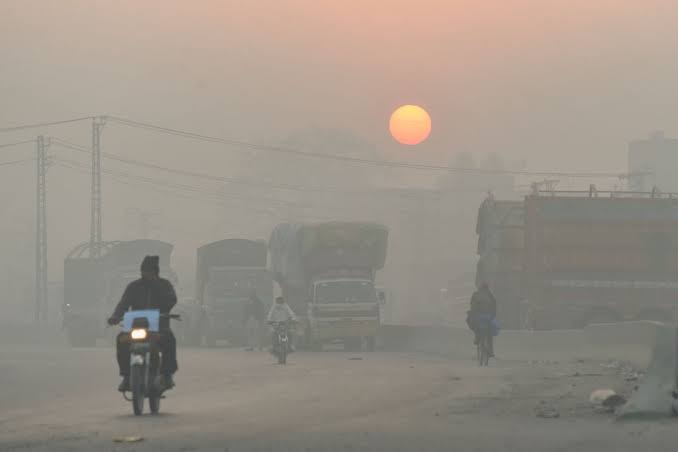Lahore becomes The World’s Most Polluted City

Lahore has once again been designated as the most polluted city in the world, with its Air Quality Index (AQI) reaching an alarming level of 708 on October 29, 2024.
This marks a significant deterioration in air quality, as the AQI levels are deemed hazardous and pose serious health risks to the population.
A significant contributor to Lahore’s air quality issues is the seasonal practice of stubble burning in neighbouring regions, particularly in India.
This practice releases large amounts of particulate matter into the atmosphere, exacerbating smog conditions during winter months.
The city faces severe pollution from industrial activities, including emissions from brick kilns and factories. The use of low-quality fuels further aggravates the situation.Increasing vehicular traffic has led to higher emissions of harmful pollutants.
The Punjab government has previously attempted to regulate this by banning certain fuel types and impounding non-compliant vehicles.
Lahore’s geographical location, being surrounded by hills and situated in a low-lying area, contributes to a phenomenon known as temperature inversion.
This traps pollutants close to the ground, preventing their dispersion and leading to persistent smog.
In response to the deteriorating air quality, authorities have initiated several measures: The Punjab government has considered cloud seeding as a method to induce rain and alleviate smog.
However, past efforts have had limited success and are viewed as unpredictable solutions. Recent reports indicate that over 328 brick kilns have been demolished, and more than 600 vehicles violating emissions standards have been impounded.
Despite these efforts, critics argue that these measures are insufficient without a comprehensive urban planning strategy that addresses the root causes of pollution in Lahore.
The ongoing crisis highlights the urgent need for effective policies and cooperation among neighbouring regions to tackle air quality issues collaboratively.




